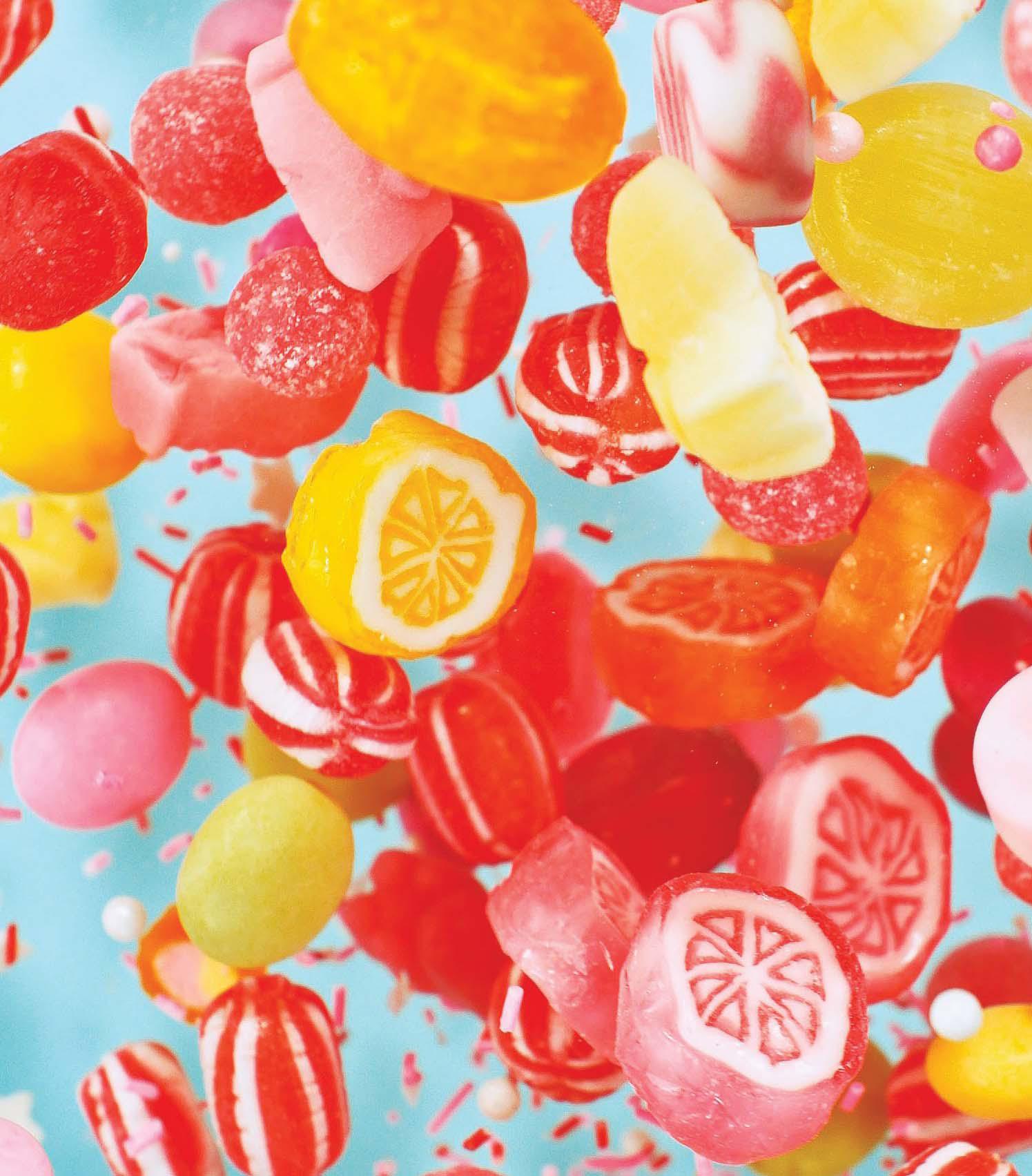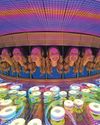
Imagine you’re walking down the sweet aisle at your local grocery store. You see flying saucers, sour gummies, Maltesers, Mars bars and so much more. Sure, at first glance – and bite – these sweets may taste, look, smell and feel different, but if you boil them all down (literally) they all have the same base ingredient: sugar. It is only when sugar mixes with science that it shapeshifts into your favourite sweets. So how are different candies made? Why do you crave them? Who is hard at work making the world taste so good? Let’s dive into the wild world of sweets to find out.
Candy chemistry
Candy-making is a lesson in chemistry – a type of science that studies how substances change when they react with each other. To make different sweets, candy makers (also known as “food engineers”) combine sugar, water and other ingredients – flavourings and gelatins (substances that form a stiff jelly) – and then bring them to a boil. Boiling the mixture causes a chemical reaction that changes the structure of sugar. Once that happens, the sugar mixture is ready to be cooled. It is the cooling process that determines what form the sugar will take. All candy can be sorted into two categories: crystalline or non-crystalline. Crystalline candies are continuously stirred as they cool, which makes smooth, easy-to chew sweets like fudge. Non-crystalline candies are usually more brittle-like sticks of rock and lollipops. The mixture is boiled at a much higher temperature, which gives it a hard glassy texture.
Sweet school
Denne historien er fra Issue 74-utgaven av The Week Junior Science+Nature UK.
Start din 7-dagers gratis prøveperiode på Magzter GOLD for å få tilgang til tusenvis av utvalgte premiumhistorier og 9000+ magasiner og aviser.
Allerede abonnent ? Logg på
Denne historien er fra Issue 74-utgaven av The Week Junior Science+Nature UK.
Start din 7-dagers gratis prøveperiode på Magzter GOLD for å få tilgang til tusenvis av utvalgte premiumhistorier og 9000+ magasiner og aviser.
Allerede abonnent? Logg på

Camera Obscura
Imagine stepping inside a dark room, where the only source of light comes through one small hole in the wall.

MANCHESTER SCIENCE FESTIVAL
From 18-27 October, shoppers at the Arndale shopping centre in Manchester, England, will face a giant spider.

Should musicians stop touring?
Multiple concerts travelling around the world have a big impact on the environment.

Are ghosts real?
Plenty of people believe in ghosts, but it's hard to find proof.

SMASH STEREOTYPES
In an extract from his prize-winning book, scientist and writer Adam Rutherford shows you how to use the power of science to fight racism. This chapter, titled Myth-Busting, is all about sport.

Animal awareness
What would it feel like to be another animal?

Hamza Yassin
Go behind the camera with a wildlife filmmaker.

WILDLIFE WATCH
Ben Hoare goes on a safari from his sofa to discover how nature documentaries are made.

Big bum breakthrough
A team of researchers who found out that mammals can breathe through their bottoms have won a prize at the lg Nobel awards.

A jaw-dropping undersea snap
A photograph of a Bryde's whale feeding on a heart-shaped \"bait ball\" of sardines has won the Ocean Photographer of the Year contest.